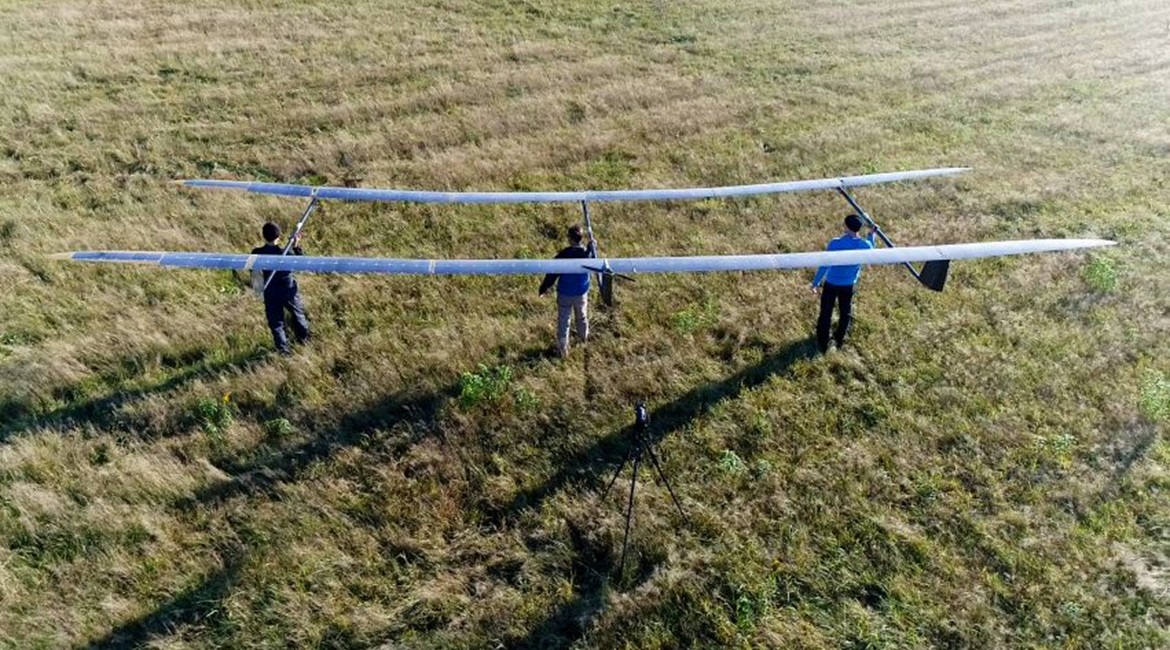
UAVOS recently reached a milestone in its solar-powered High-Altitude Pseudo Satellite (HAPS) ApusDuo development by flying the aircraft in unstable atmospheric conditions, according to a company statement.
UAVOS performed a series of flight trials in July with the ApusDuo in Belarus at altitudes up to 62,336 ft. The company tested a unique control system, which UAVOS said allows HAPS aircraft with a large wing elongation similar to the ApusDuo to fly in unstable atmospheric conditions.

UAVOS’ solar-powered High Altitude Pseudo Satellite ApusDuo. The company recently achieved a milestone by flying the aircraft in unstable atmospheric conditions. (UAVOS)
The ApusDuo coped with turbulence, actively changing the bend of the wings, the company said on 5 October. UAVOS will perform another test in October with the ApusDuo reaching 62,336 ft altitude.
UAVOS said on 7 October that the ApusDuo is controlled by a special version of the company’s autopilot. This system comprises three synchronised autopilots that control the ApusDuo by changing the platform’s geometry.
The UAVOS control system does not require the installation of wing mechanisation, which results in reducing the aircraft’s weight by 30% or more. It also improves reliability and reduces manufacturing costs by simplifying wing production.
Looking to read the full article?
Gain unlimited access to Janes news and more...






